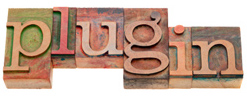 If you are not already with VST plugins, let me enlighten you at once. Your home studio software program probably came with at least some effects built-in, such as compression, EQ, or maybe a reverb effect. But sooner or later you’ll probably want to add to that initial collection of effects. Enter, VST, which stands for Virtual Studio Technology. It was invented by Steinberg, maker of excellent audio recording software and hardware, who hold the trademark for VST technology. But that’s not the stuff you want to know, is it?
If you are not already with VST plugins, let me enlighten you at once. Your home studio software program probably came with at least some effects built-in, such as compression, EQ, or maybe a reverb effect. But sooner or later you’ll probably want to add to that initial collection of effects. Enter, VST, which stands for Virtual Studio Technology. It was invented by Steinberg, maker of excellent audio recording software and hardware, who hold the trademark for VST technology. But that’s not the stuff you want to know, is it?
VST Effect Plugins
The most common use of VST is to add effects to tracks in your DAW, or to add editing tools to your editor. 3rd-party developers sell these effect plugins for lots of different effects like chorus, flanger, delay, filters, EQ, compressors, limiters, noise reduction, tuning effects like Auto-Tune, just to name a very few. A search on B&H Pro Audio’s website for VST Effects brings up 73 different items! One reason to use these plugins rather than, or in addition to the built-in effects on your software is that a plugin developer has designed their product with nothing else in mind, so the quality of the resulting effect is likely to be much better than one of a collection in a bundle that was a bonus to your recording program. And as I already hinted at, the sheer variety and volume of selection is another reason to use VST plugins.
Virtual Instruments
I’ve discussed virtual instruments here many times. They give us the ability to add realistic sounding drums, horns, pianos, harps, violins (do I need to go on?), etc. to our recordings without having to actually have the physical instrument. Neither do we need to have a person to play said instrument. All we need is a MIDI keyboard. Heck, if our recording software has a MIDI editor (Reaper does;)), all we need to do is draw in MIDI notes and when we hit the “play” button, the MIDI data will play the instrument. A search on the B&H site for VSTi returned 31 different results. And several of these were not just single instruments but collections or packages of instruments. For example, the Garritan Virtual Marching Band VSTi contains dozens of instruments including individual and grouped trumpets, trombones, tubas, cornets, piccolos, oboes, clarinets, and the full range of drums and other percussion instruments you’d find in a drum line. This is just one package from one developer.
How To Use VST/VSTi
Installing a VST or VSTi will place a dll file on your computer (usually into a folder called “Steinberg/VST” even if you don’t have any Steinberg programs). Most recording programs search your directories for VST or VSTi files (dll type) when they open, so you probably won’t have to do anything. The effect or instrument will just be available to you once inside your DAW.
Most DAWs work the same way. For effects, you simply click on the “FX” (in Reaper) or similar button on a track control, and choose your VST effect. Then that effect will be applied to your audio.
For instruments, it’s pretty much the same except that the track will need to be a MIDI track. Then whatever notes the MIDI data play will be heard as played on the instrument you loaded up.
So that’s it in a nutshell. Adding professional effects or virtual instruments is fast and easy and can really raise the beam on the quality of your recordings.
Cheers!

 If I had to estimate what percentage of very professional-looking sales videos on the web were accompanied by crappy audio due to poor voice-over quality, I’d have to say at least 50 percent. That’s a lot folks! And there is no reason for it – none at all. Audio for video is not hard. If your videos are just for fun, the narration quality may not be that important. But videos for your business affect the bottom line, and amateur-sounding audio might well be limiting how successful you are.
If I had to estimate what percentage of very professional-looking sales videos on the web were accompanied by crappy audio due to poor voice-over quality, I’d have to say at least 50 percent. That’s a lot folks! And there is no reason for it – none at all. Audio for video is not hard. If your videos are just for fun, the narration quality may not be that important. But videos for your business affect the bottom line, and amateur-sounding audio might well be limiting how successful you are.
